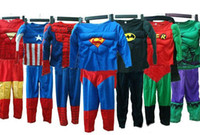Souvenir Sheet: Rama X in Coronation Regalia (Thailand 2020)
Rama X in Coronation Regalia (Thailand 2020)
21 December (Thailand ) within release Coronation of King Rama X, First Anniversary (2020) goes into circulation Souvenir Sheet Rama X in Coronation Regalia face value 4*100 Thai baht
| Souvenir Sheet Rama X in Coronation Regalia in catalogues | |
|---|---|
| Michel: | Mi: TH 3847KB |
Souvenir Sheet is square format.
Also in the issue Coronation of King Rama X, First Anniversary (2020):
- Stamp - Coronation Regalia - Crown of Victory face value 5;
- Stamp - Coronation Regalia : Royal Fan and Whisk face value 5;
- Stamp - Coronation Regalia : Royal Scepter face value 5;
- Stamp - Coronation Regalia : Royal Upturned Slippers face value 5;
- Stamp - Coronation Regalia : Sword of Victory face value 5;
- Stamp - Rama X in Coronation Regalia face value 100;
- Souvenir Sheet - Rama X in Coronation Regalia face value 4*100;
- Full Pane - Coronation Regalia - Crown of Victory face value 10*5;
- Full Pane - Coronation Regalia: Royal Fan and Whisk face value 10*5;
- Full Pane - Coronation Regalia: Royal Scepter face value 10*5;
- Full Pane - Coronation Regalia: Royal Upturned Slippers face value 10*5;
- Full Pane - Coronation Regalia: Sword of Victory face value 10*5;
Souvenir Sheet Rama X in Coronation Regalia it reflects the thematic directions:
An anniversary is the date on which an event took place or an institution was founded in a previous year, and may also refer to the commemoration or celebration of that event. For example, the first event is the initial occurrence or, if planned, the inaugural of the event. One year later would be the first anniversary of that event. The word was first used for Catholic feasts to commemorate saints. Most countries celebrate national anniversaries, typically called national days. These could be the date of independence of the nation or the adoption of a new constitution or form of government. The important dates in a sitting monarch's reign may also be commemorated, an event often referred to as a "Jubilee".
In British heraldry, a coronet is any crown whose bearer is less than sovereign or royal in rank, irrespective of the crown's appearance. In other languages, this distinction is not made, and usually the same word for crown is used irrespective of rank (German: Krone, Dutch: Kroon, Swedish: Krona, French: Couronne, etc.) In this use, the English coronet is a purely technical term for all heraldic images of crowns not used by a sovereign, and implies nothing about the actual shape of the crown depicted. A Coronet is another type of crown, but is reserved for the lower ranks of nobility like Marquesses and Marchionesses, Earls and Countesses, Barons and Baronesses, and some Lords and Ladies. The specific design and attributes of the crown or coronet signifies the hierarchy and ranking of its owner.
King is the title given to a male monarch in a variety of contexts. The female equivalent is queen regnant (while the title of queen on its own usually refers to the consort of a king). In the context of prehistory, antiquity and contemporary indigenous peoples, the title may refer to tribal kingship. Germanic kingship is cognate with Indo-European traditions of tribal rulership (c.f. Indic rājan, Gothic reiks, and Old Irish rí, etc.) In the context of classical antiquity, king may translate Latin rex or either Greek archon or basileus. In classical European feudalism, the title of king as the ruler of a kingdom is understood as the highest rank in the feudal order, potentially subject, at least nominally, only to an emperor (harking back to the client kings of the Roman Empire). In a modern context, the title may refer to the ruler of one of a number of modern monarchies (either absolute or constitutional). The title of king is used alongside other titles for monarchs, in the West prince, emperor, archduke, duke or grand duke, in the Middle East sultan or emir; etc. Kings, like other royalty, tend to wear purple because purple was an expensive color to wear in the past.
A Royalty is the immediate family of a king or queen regnant, and sometimes his or her extended family. The term imperial family appropriately describes the family of an emperor or empress, and the term papal family describes the family of a pope, while the terms baronial family, comital family, ducal family, grand ducal family, or princely family are more appropriate to describe the relatives of a reigning baron, count, duke, grand duke, or prince. However, in common parlance members of any family which reigns by hereditary right are often referred to as royalty or "royals." It is also customary in some circles to refer to the extended relations of a deposed monarch and his or her descendants as a royal family. A dynasty is sometimes referred to as "the House of ...". As of July 2013, there are 26 active sovereign monarchies in the world who rule or reign over 43 countries in all
In clothing, a suit is a set of garments made from the same cloth, usually consisting of at least a jacket and trousers. Lounge suits (also known as business suits when sober in colour and style), which originated in Britain as country wear, are the most common style of Western suit. Other types of suit still worn today are the dinner suit, part of black tie, which arose as a lounging alternative to dress coats in much the same way as the day lounge suit came to replace frock coats and morning coats; and, rarely worn today, the morning suit. This article discusses the lounge suit (including business suits), elements of informal dress code.





